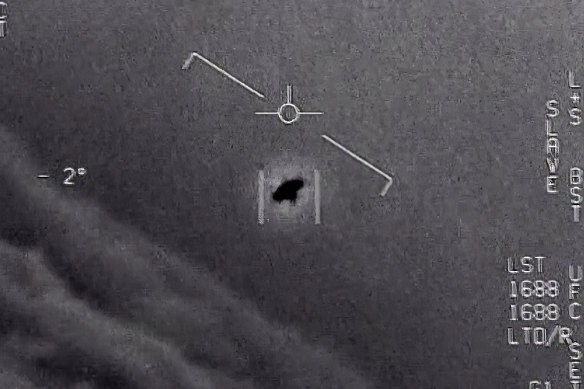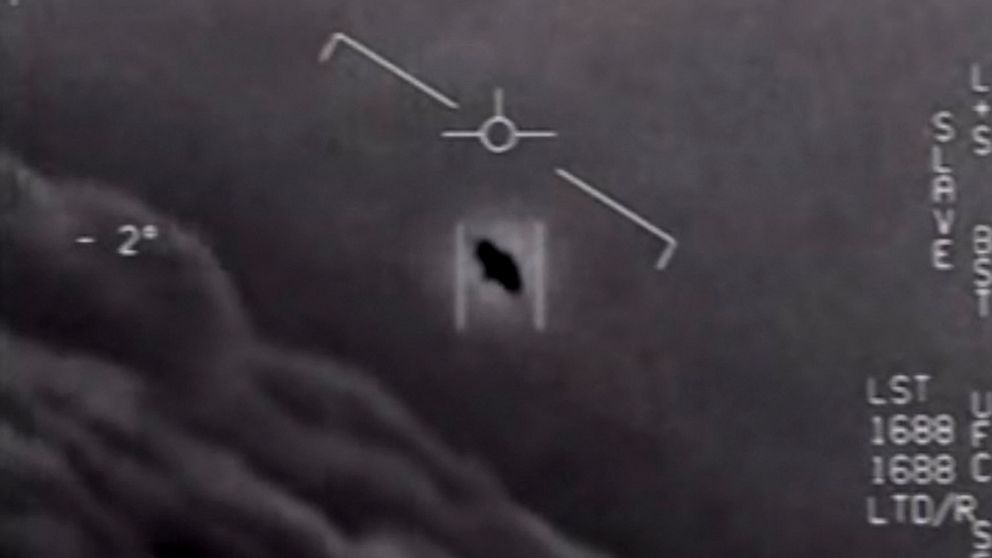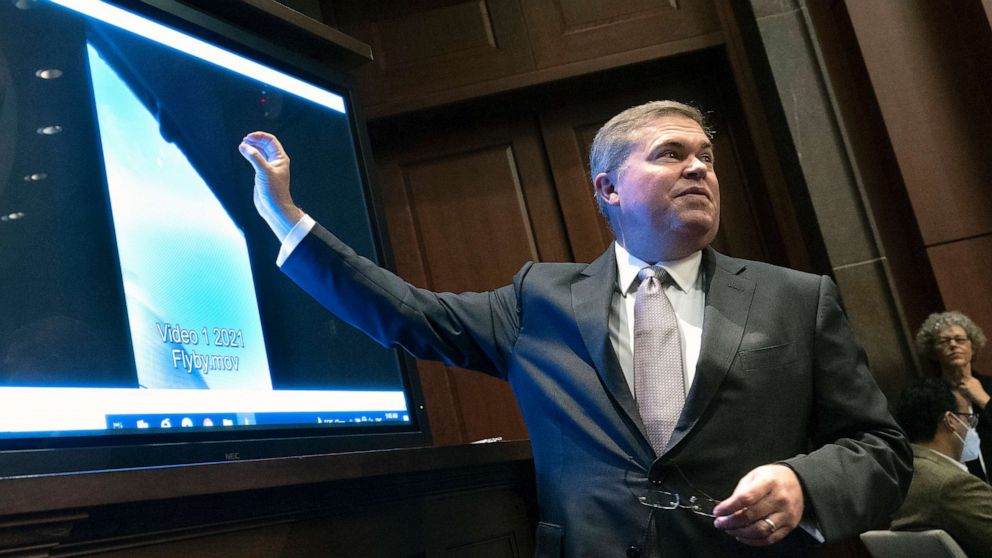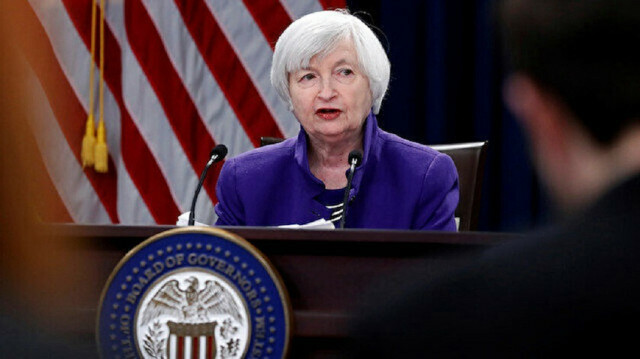However, officials say there has been no evidence pointing to alien life

The Pentagon has released footage of unidentified flying objects in recent years
Deutsche Welle | Published 17.12.22
The Pentagon said on Friday that it has received hundreds of reports of unidentified flying objects, or UFOs, since establishing an office dedicated to the phenomenon in July.
But the new reports do not point to evidence of alien life, officials said.
"I have not seen anything in those holdings to date that would suggest that there has been an alien visitation, an alien crash or anything like that," said Ronald Moultrie, under secretary of defense for intelligence and security.
Pentagon to investigate all new reports
The All-domain Anomaly Resolution Office (AARO) was created in July to investigate unidentified objects in the sky, underwater or in space.
Its establishment followed more than a year of renewed interest in unidentified flying objects that military pilots have observed but have sometimes been reluctant to report.
The AARO is headed by Sean Kirkpatrick, who said the Pentagon received "several hundred" reports into the phenomenon this year.
"I would just say that we are structuring our analysis to be very thorough and rigorous. We will go through it all," Kirkpatrick said. "As a physicist, I have to adhere to the scientific method, and I will follow that data and science wherever it goes."
Historical UFO reports under the microscope
Meanwhile, in the annual defense policy bill passed by Congress earlier this week, the Pentagon has also been directed to prepare a report looking at the historical record of the US government related to UFOs going back to 1945.
The bill will ensure the AARO researches all records, including those so highly classified that few people know about them.
"That is going to be quite a research project," Kirkpatrick said.
As for the new reports from 2020, the Director of National Intelligence is set to provide an update with the exact number of reported sightings by the end of the year.
ByTara Copp
December 17, 2022
Washington: A new Pentagon office set up to track reports of unidentified flying objects has received “several hundreds” of new reports, but no evidence so far of alien life, the agency’s leadership says.
The All-domain Anomaly Resolution Office (AARO) was set up in July and is responsible for not only tracking unidentified objects in the sky, but also underwater or in space — or potentially an object that has the ability to move from one domain to the next.

The image from the US Department of Defence from 2015 shows an unexplained soaring high along the clouds, travelling against the wind.CREDIT:AP
The office was established following more than a year of attention on unidentified flying objects that military pilots have observed but have sometimes been reluctant to report due to fear of stigma.
In June 2021 the Office of the Director of National Intelligence reported that between 2004 and 2021, there were 144 such encounters, 80 of which were captured on multiple sensors.
Since then, “we’ve had lots more reporting,” said anomaly office director Sean Kirkpatrick. When asked to quantify the amount, Kirkpatrick said, “several hundreds.”
RELATED ARTICLE

Those Navy UFO videos? They are real, says the Pentagon
An updated report from the Director of National Intelligence that will provide specific figures on new reports received since 2021 is expected by the end of the year, the officials said.
The office was set up not only to examine the question of whether there’s extraterrestrial life, but also because of the security risk posed by so many encounters with unknown flying objects by military installations or military aircraft.
This May, Congress held its first hearing in more than half a century on the topic, with multiple members expressing concern that whether or not the objects are alien or potentially new, unknown technology being flown by China, Russia or another potential adversary, the unknown creates a security risk.
So far, “we have not seen anything, and we’re still very early on, that would lead us to believe that any of the objects that we have seen are of alien origin,” said Ronald Moultrie, under secretary of defence for intelligence and security. “Any unauthorised system in our airspace we deem as a threat to safety.”
The office is also working on ways to improve its ability to identify unknown objects, such as by recalibrating sensors that may be focused just on known adversary aircraft or drone signatures, Moultrie said.
RELATED ARTICLE

Even the Pentagon is looking for aliens. What are the odds of finding them?
One reason for the hundreds of additional reports coming in may be the outreach the department has done to destigmatise reporting potential encounters. Each service has also established its own reporting processes, Kirkpatrick said.
Beyond unidentifiable objects, there’s a lot of new technology — such as future stealth bombers and stealth fighters, drones and hypersonic missiles being fielded by both the US and China — that could be mistaken for a UFO. Kirkpatrick said the new office has been coordinating with the Pentagon and the US intelligence community to get the signatures of US technology in order to rule out those aircraft or drones.
“We are setting up very clear mechanisms with our blue programs, both our DOD and IC programs, to deconflict any observations that come in with blue activities, and ensure that we weed those out and identify those fairly early on,” Kirkpatrick said, referring to the “blue” US aircraft programs in operation by the Pentagon or intelligence agencies.
AP
The agency is reviewing hundreds of incidents.
By Luis Martinez
December 16, 2022

Another UFO report comes out this week
The Pentagon said that they have has not yet been able to find any evidence that extraterrestrials may be responsible for the hundreds of UFO incidents they are reviewing or that any alien beings may have crashed on Earth.
Senior Pentagon officials relayed this to reporters Friday in a briefing to highlight the broad review headed by the new All-domain Anomaly Resolution Office (AARO) working with other federal agencies to review unidentified aerial phenomena incidents. Unidentified anomalous phenomena or UAP's is the new term for UAP's and has itself gone a name change as it is no longer limited to aerial phenomena.
UFO enthusiasts have been waiting since Oct. 31 for a long delayed first annual update by the Director of National Intelligence to their 2020 report that could explain only one of the 144 incidents it reviewed.
The Pentagon's update on Friday gave a hint of what that upcoming report might reveal.

Deputy Director of Naval Intelligence Scott Bray explains a video of an unidentified aerial phenomena, as he testifies before a House Intelligence Committee subcommittee hearing at the U.S. Capitol on May 17, 2022 in Washington, DC.
Kevin Dietsch/Getty Images, FILE
MORE: Another UFO report expected this week, some incidents still unexplained
At a congressional hearing in May, Pentagon officials said they were now reviewing about 400 UAP incidents.
On Friday, officials said that so far nothing seems to indicate an extraterrestrial origin in the incidents they have reviewed so far.
"At this time, the answer's no," said Ron Moultrie, the under secretary of defense for intelligence and security. "We have nothing."
He added that nothing has been found "that any of the objects that we had seen are of alien origin."
MORE: Pentagon now reports about 400 UFO encounters: 'We want to know what's out there'
Moultrie provided a similar answer when asked if the review indicated the possibility that extraterrestrials may have crashed or landed on earth.

Video footage released by the To the Stars Academy of Arts and Science purportedly shows pilots observing a UFO while aboard a U.S. Navy aircraft.
To the Stars Academy of Arts and Science
"I have not seen anything in those holdings to date that would suggest that there has been an alien visitation and alien crash or anything like that," he said. Moultrie explained that by holdings he was referring to documents, witness interviews, or written recollections from witnesses.
ARRO Director Sean Kirkpatrick told reporters that his office was taking a sober approach to the review and would not rule out any possibility.
"I would just say that we are structuring our analysis to be very thorough and rigorous. We will go through it all," said Kirkpatrick. "As a physicist, I have to adhere to the scientific method and I will follow that data and science wherever it goes."
Moultrie noted that some of the incidents under review may be from right here on Earth.
MORE: Few answers in unclassified UFO report
"I think it would be safe to say that there will be probably a number of these activities that can be characterized as non-adversarial systems, things like balloons and things like UAVs that are operated for purposes other than surveillance or intelligence collection," he said.
Kirkpatrick agreed that was a fair characterization, but that there can be multiple explanations.
"I would just emphasize there's not a single answer for all of this, right. There's going to be lots of different answers," he said. "And part of my job is to sort out all of those hundreds of cases on which ones go to which things."
"Our team knows that the public interest in UAP is high. We are developing a plan to provide regular updates and progress reporting to the public on our work," he added. Though he explained that any potential releases would have to be weighed against maintaining some information classified for national security purposes.
Moultrie said that from now on UAP no longer stands for unidentified aerial phenomena, but now refers to unidentified anomalous phenomena, because they're no longer just limiting themselves to reviewing incidents in the skies.
"This new terminology expands the scope of UAP to include submerge and trans-medium objects and identify phenomenon all domains whether in the air, ground sea or space, pose potential threats to personal security and operations security, and they require our urgent attention," said Moultrie




:quality(70)/cloudfront-eu-central-1.images.arcpublishing.com/thenational/3XTBTH5DPDJGDNO3EPBYROC22U.jpg)

.jpg)
